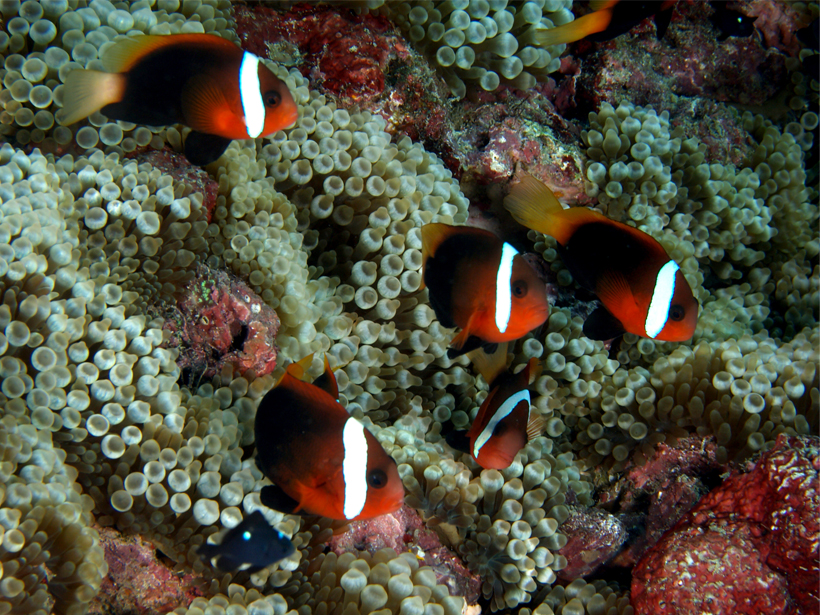Humans are changing the face of the planet. We’ve had sufficient impact on the surface that scientists have proposed a new geologic age, the Anthropocene, and we’re also changing the hydrosphere. In addition to toxins and plastics, the oceans are increasingly filled with human-generated noise pollution. Scientists first realized that this noise pollution affects marine mammals 3 decades ago, but now new research is highlighting its effects on species lower down on the food chain.
A study in Marine Pollution Bulletin looking at the effects of boat noise on the early life development of two types of damselfish found that heightened noise was associated with increased heart rates and physical changes to the fishes’ bodies. The results suggest that growing up in a noisy reef could affect the fishes’ long-term survival rates.
Noise pollution in the ocean has increased fourfold since the 1950s, largely because of commercial shipping, and the effects are noticeable. Previous work has shown that noise pollution changes the behavior, communication, and movements of marine wildlife and also induces stress in fish, but there is little research to date on noise’s impact on early development.
The new research looked at the development of two species of damselfish, cinnamon clownfish and spiny chromis, as they grew from embryos to hatchlings in tanks. Half of the embryos were exposed to normal levels of marine sounds, and the other half were exposed to the additional noise of motorboats. The researchers noted that the boat noise increased the fishes’ heart rates by 10% in both species, indicating they were stressed by the noise.
After hatching, the spiny chromis exposed to boat noise were slightly larger and had bigger eyes and smaller egg yolk sacs. The fish are sustained by yolk until they’re able to find their own food, so noise pollution may affect the way fish develop into adults.
In the lab, both noise groups had similar survival rates at birth, but in natural environments it is possible that increased stress could make the fish more vulnerable to predation. The differences between the two species further suggest that some fish might be more resilient to noise pollution.
“With the fish, [scientists] are just starting to touch the surface of who might be vulnerable and who are the more resilient species,” said Lauren McWhinnie, a researcher at the University of Victoria in Canada who was not involved with the new study. “We’ve looked before with climate and acidification, seeing that there are certain species that will be more resilient to those things, but noise is quite a new factor.”
—Mara Johnson-Groh ([email protected] ), Freelance Science Writer and Photographer
Citation:
Johnson-Groh, M. (2019), Damselfish in distress?, Eos, 100, https://doi.org/10.1029/2019EO125043. Published on 31 May 2019.
Text © 2019. The authors. CC BY-NC-ND 3.0
Except where otherwise noted, images are subject to copyright. Any reuse without express permission from the copyright owner is prohibited.

